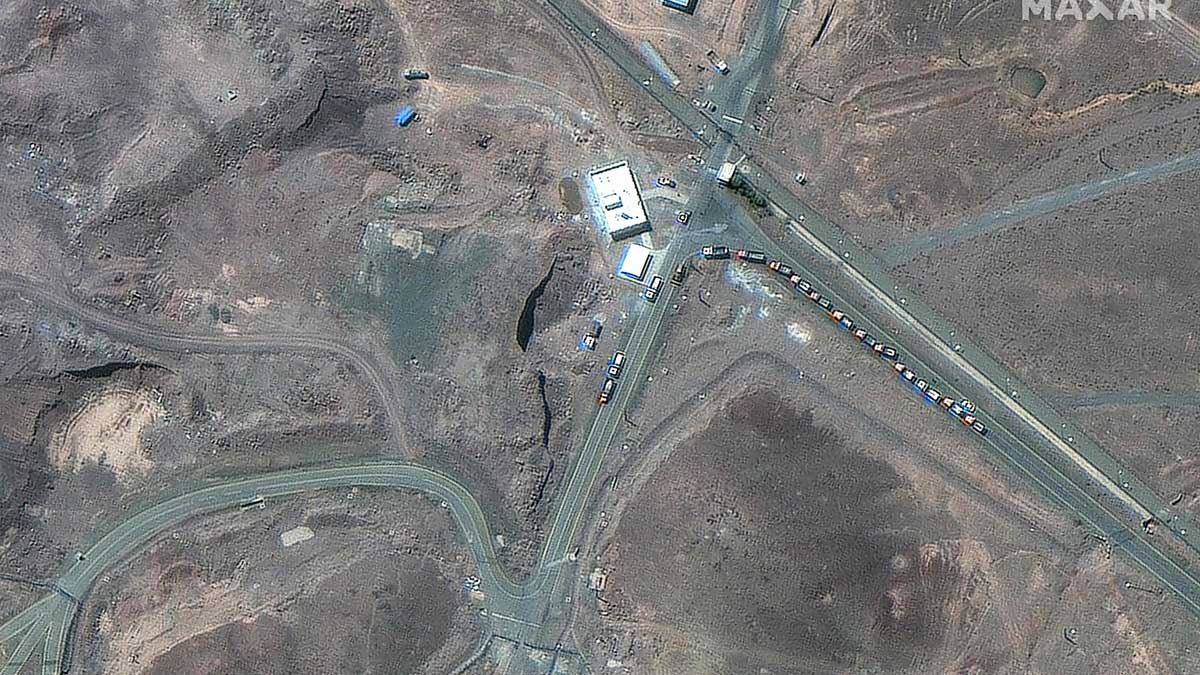Behind the mystery of Iran's missing 400 kg enriched Uranium-235
 Cargo trucks postioned near an underground entrance to Iran's Fordow Fuel Enrichment Plant (FFEP), in Fordo | AFP
Cargo trucks postioned near an underground entrance to Iran's Fordow Fuel Enrichment Plant (FFEP), in Fordo | AFP
US President Donald Trump on Saturday claimed the US B-2 bombers obliterated Iran's three nuclear facilities, including the Fordow underground plant. Despite the US claims, questions are raised about how successful the campaign was and whether it managed to decimate Tehran's nuclear programme.
However, the focus is now on the 400 kg of Uranium, which Iran claims to have moved to a secure location. Even senior US officials admitted they are clueless about the fate of Iran’s over 60 per cent enriched just-shy-of weapons-grade Uranium.
Two Israeli officials with knowledge of the intelligence told The New York Times that Iran had moved equipment and uranium outside Fordow in recent days. Satellite images from two days before the attack showed earth movers and dump trucks lined outside the nuclear plant. According to analysts at TS2 Space, a Polish defence firm, this was a frantic effort to move centrifuges or shielding materials.
Experts believe enriched Uranium can be moved inside special steel cylinders that can withstand significant pressure and temperature changes. The cylinders are then placed inside an extra level of protective casing, called an overpack, and can be transported via rail, road and sea.
US Vice President J D Vance too acknowledged that Iran had its highly enriched uranium. "We're going to work in the coming weeks to ensure that we do something with that fuel," he said. "They no longer have the capacity to turn that stockpile of highly enriched uranium to weapons-grade uranium," he told ABC News.
If Iran manages to do so, this means that it still possesses the material needed to develop a nuclear weapon. But, the equipment, including centrifuges, needs to be rebuilt which could take years.
According to Ronen Solomon, an Israeli intelligence analyst, told The Telegraph that this would be like "having fuel without a car". "They have the uranium, but they can’t do a lot with it, unless they have built something we don’t know about on a small scale," he added.
But, others think Iran's nuclear programme is still alive. "It comes down to the material and where it is," The Financial Times quoted Richard Nephew, a former US nuclear negotiator. "On the basis of what we’ve seen at this point, we don’t know where the material is. We don’t have any real confidence that we’ve got the ability to get it any time soon," he said, adding that without access to Iran’s current stockpile, any assumption of long-term disruption is premature. "You would be foolish if you said the programme was delayed by anything more than a few months," he said.
Ali Shamkhani, an adviser to the supreme leader, has already declared that the "game isn't over". "Even assuming the complete destruction of the sites, the game is not over, because enriched materials, indigenous knowledge, and political will remain intact," he said.
Middle East